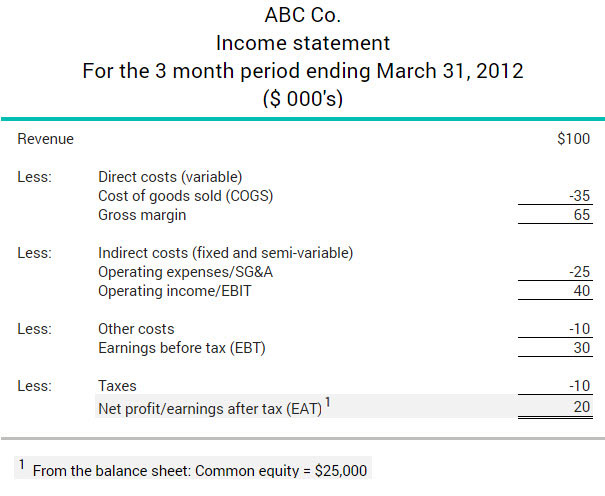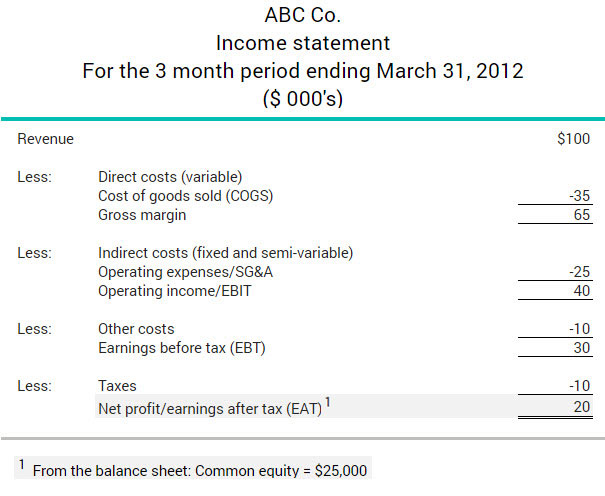Return on common equity ratio
The return on common equity ratio measures how much money common shareholders receive from a company compared with how much they invested originally. It is one of five calculations used to measure profitability. The others are: return on shareholders’ equity, net profit margin ratio, gross profit margin and return on total assets.
The measure applies only to common shares—not preferred shares—and does not include retained earnings. It is calculated by dividing earnings after taxes (EAT) by equity in common shares, with the result multiplied by 100%.
The higher the percentage, the greater the return shareholders are seeing on their investment. For this reason, the ratio is very important in helping business owners and financing professionals determine a company’s financial health.
The return on common equity ratio is typically used to track a company’s performance over time or to compare businesses within the same industry.
More on the return on common equity ratio
Return on common equity is calculated using information from the income statement and the balance sheet. In the example below, ABC Co. has $20,000 in earnings after taxes and $25,000 in common equity shares. Its return on common equity ratio is:
($20,000 / $25,000) x 100% = 80%
This is an extremely high return for the quarter.

